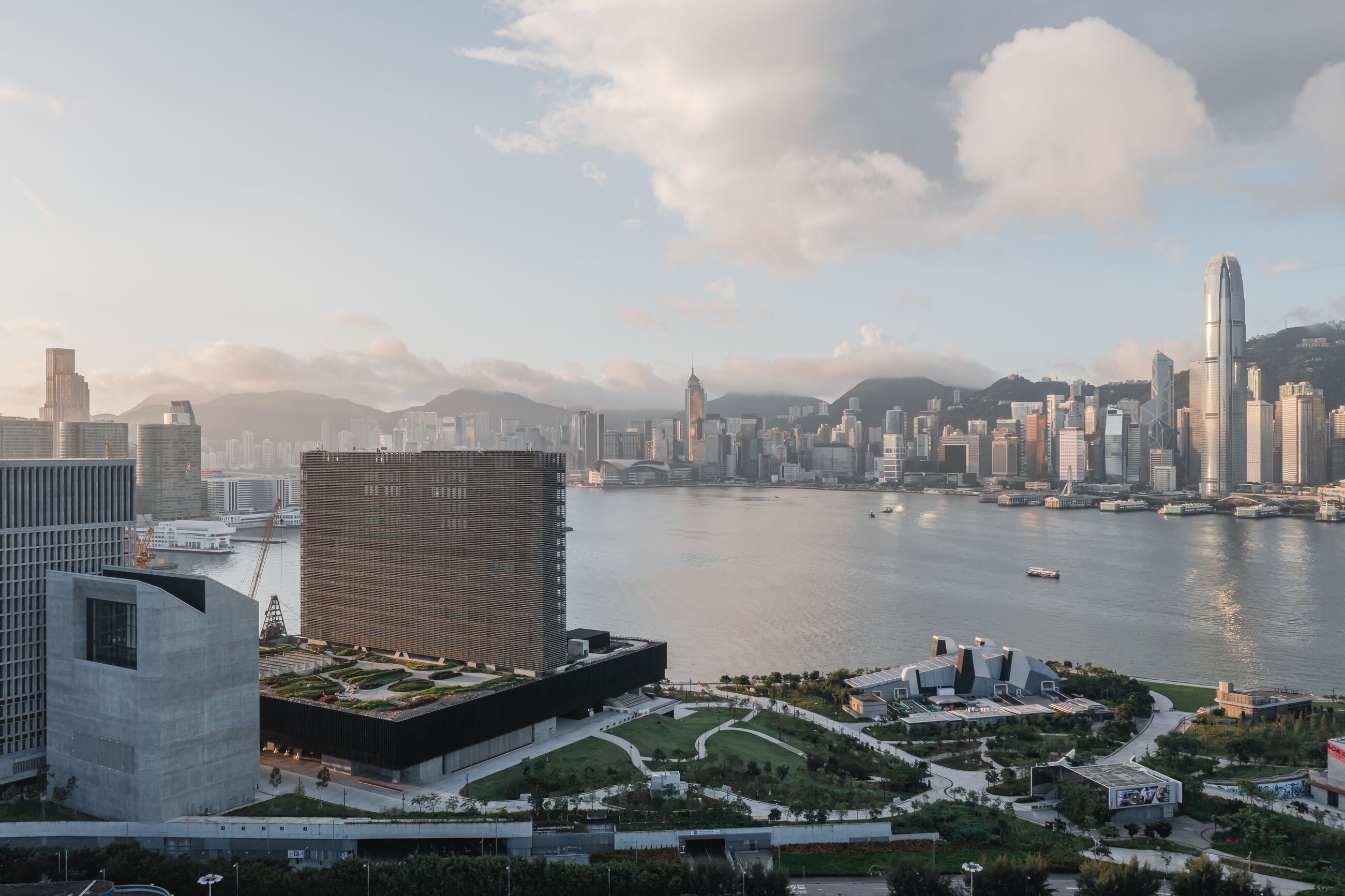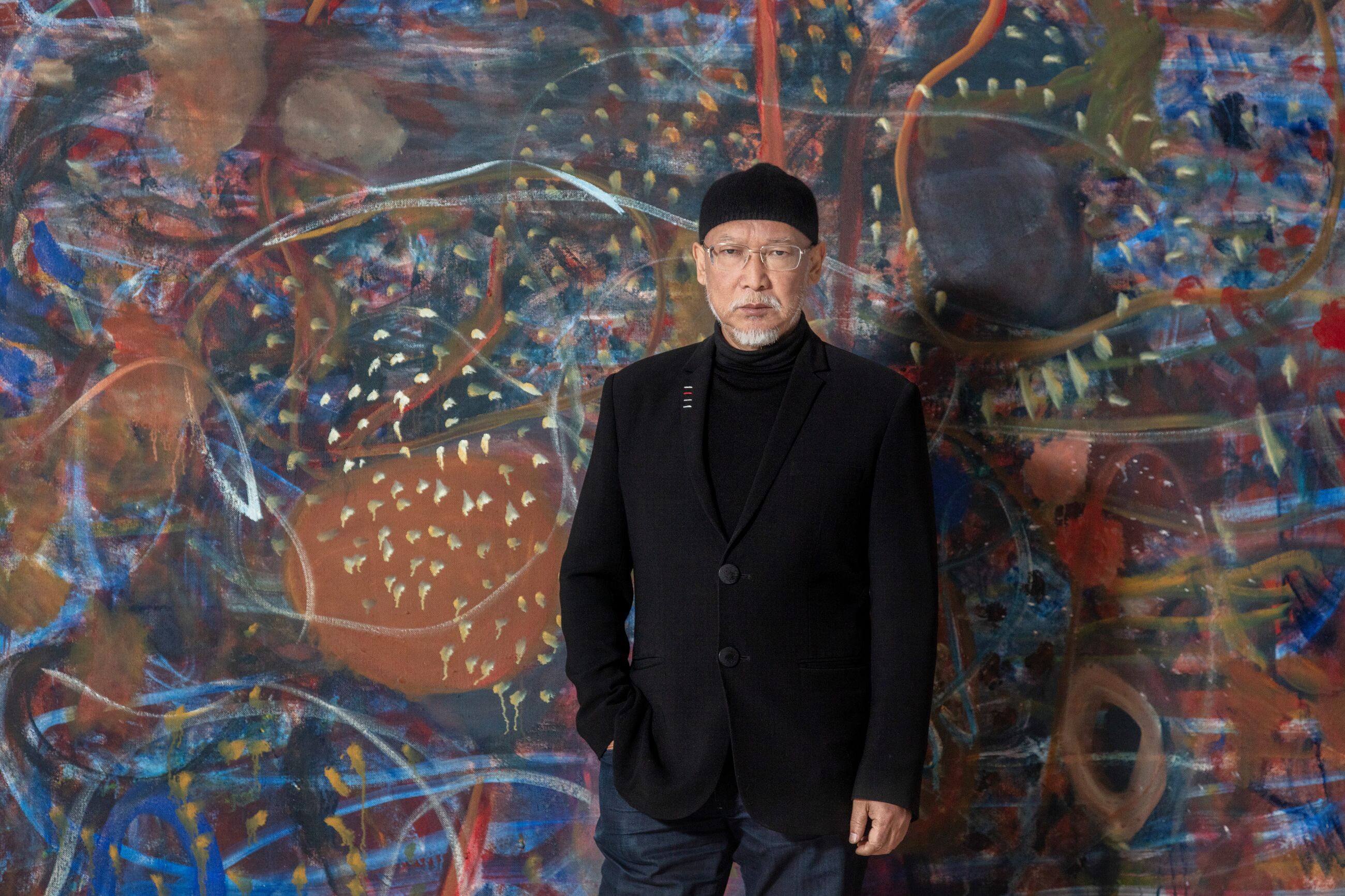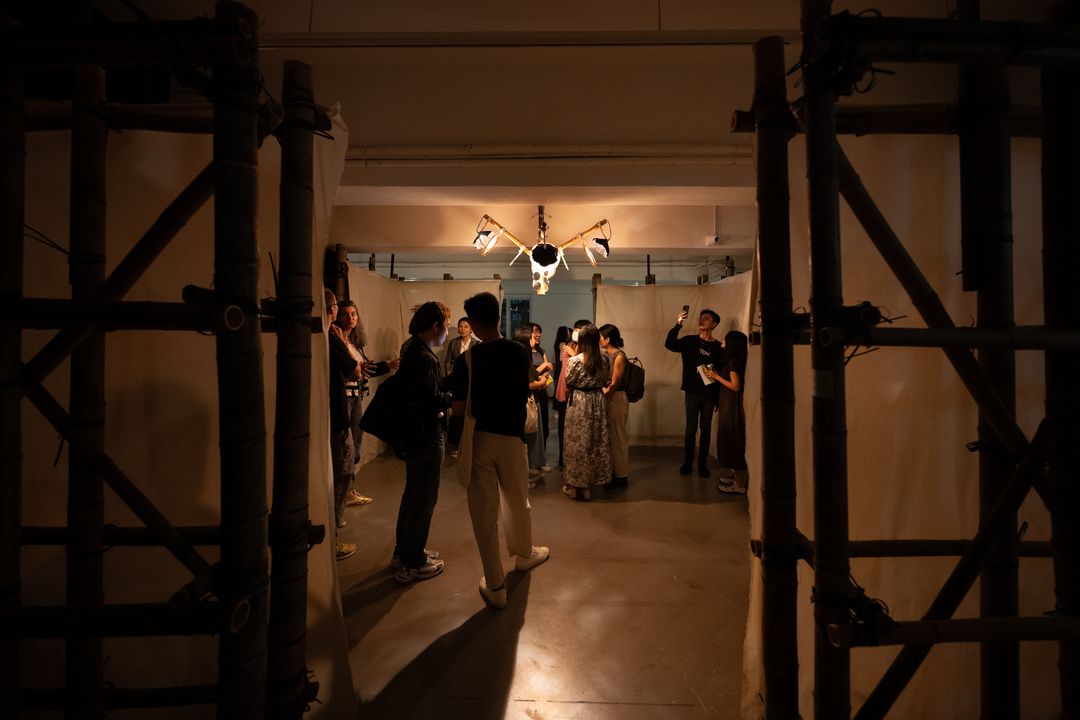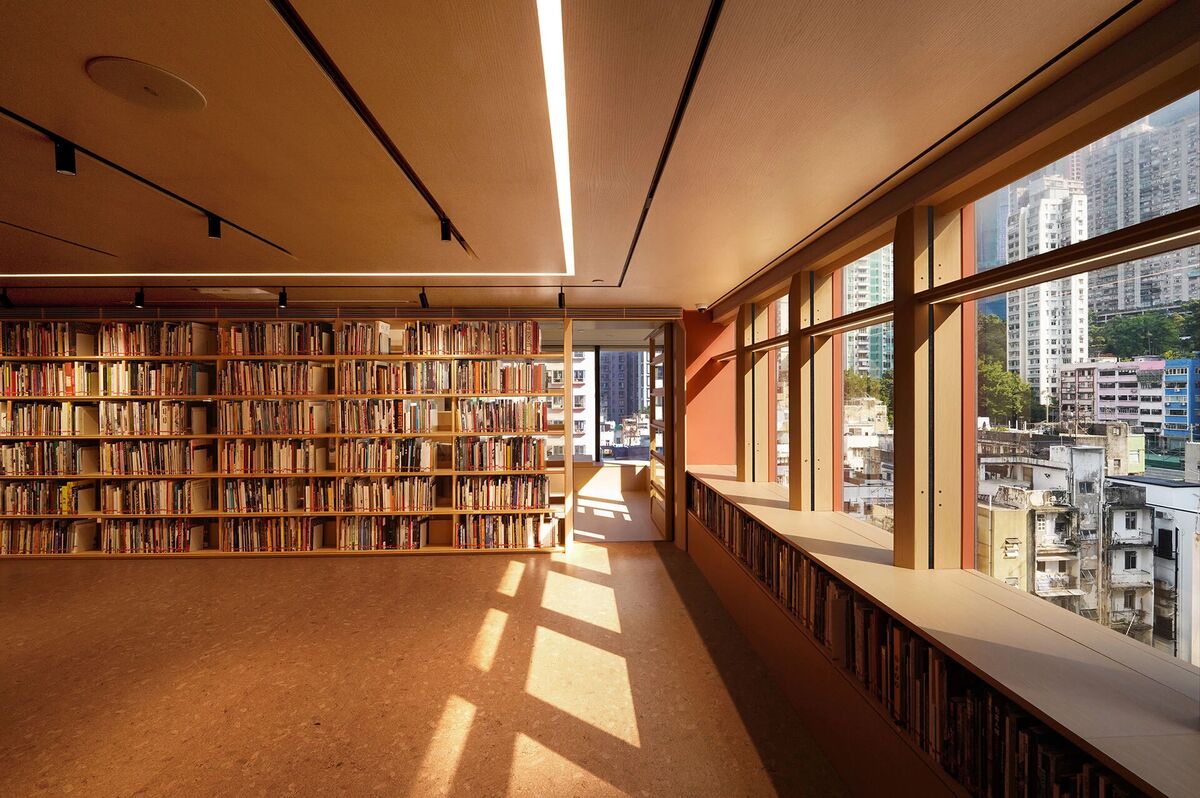Diary
Fragrant Harbor
Reflections on Hong Kong’s artistic and creative spirit

Hong Kong’s M+ museum, overlooking Victoria harbor © Virgile Simon Bertrand. Courtesy Herzog & de Meuron
Ahead of the opening of Hauser & Wirth’s new gallery space in Hong Kong, Ursula spoke to artists and voices from leading galleries and institutions about the role of this historical port as a leading creative city both in the region and internationally.
Billy Tang [Executive Director & Curator at Para Site]: Due to the lack of space, people in Hong Kong are very creative in the ways we can curate shows in different buildings, which creates an attitude of experimental improvisation. For me, it enables us to create a new vocabulary of what is possible, rather than repeat an outmoded model that was established elsewhere.
Zhang Enli [Artist, Shanghai]: Hong Kong is important because it is a place of convergence. When I was young, Mainland China was relatively poor. Some of my earliest impressions of the city were seeing denim jeans and T-shirts adorned with “Hong Kong.” Hong Kong is a place where China connects with the world.
Elaine Kwok [Managing Partner Asia at Hauser & Wirth]: Hong Kong has always been a strong force in the international art market. With the establishment of new institutions in recent years, such as M+, Tai Kwun and Palace Museum, I am excited for the city to embrace more diversity in art, whether in medium, style and subject matter. The strength of these institutions will elevate the local artistic and creative community and make it accessible to an even broader audience.
Claire Hsu [Co-founder of Asia Art Archive]: Hong Kong is a crossroads for many different cultures in the region. The infrastructure and offerings over the decades have been impressive, and it encompasses the many sectors that make up the art field—from the commercial art market to public institutions to independent exhibition spaces. It’s an easy place to navigate, and this makes it possible for different art communities to come together.

Zhang Enli’s exhibition "Faces" will inaugurate Hauser & Wirth’s new street-level gallery at 8 Queen’s Road Central, Hong Kong

Opening of "Offerings for Escalante," Para Site, Hong Kong, 2023. Photo: Felix S.C. Wong | Para Site
Where to Visit in Hong Kong
Suhanya Raffel [Museum Director of M+]: I have to start by stating that M+ is a fabulous museum to experience extraordinary art, design and architecture. There has also been development of new areas within Hong Kong, such as the South Side, which has a group of commercial galleries that work very collegially together.
Billy Tang: For me, it’s the small grassroots organizations that we need to support more. They represent the next generation and often are the places that are most overlooked or underfunded. Current Plans is relocating into a new space in Wong Chuk Hang and I’m excited to follow how they will be evolving in the future.
Elaine Kwok: To see the latest work by local artists, I like to go to galleries in the South Side, such as Exit and Empty Gallery, Blindspot Gallery and Kiang Malingue. Hong Kong Museum of Art, the city’s oldest museum, often features interesting commissions by younger Hong Kong artists—such as the gigantic swimming pool installation by Chan Wai-Lap, as well as Tsang Kin-Wah’s poetic videos—displayed alongside Chinese classical paintings.
Claire Hsu: I have to say Art Asia Archive—not only because I am affiliated with it but because I truly love being able to dip into the many offerings in the library while enjoying the vistas over Sheung Wan in a peaceful environment. The team are also super knowledgeable and always ready to share. Other staples that I love to visit regularly include M+, Tai Kwun, Para Site and CHAT.

Art Asia Archive © Otto Ng of LAAB
Hong Kong and the Art Market
Zhang Enli: I remember the earliest editions of what is now known as Art Basel Hong Kong. When I visited the first edition of Art HK, as it was known at the time, the works were very focused on artists that were popular in China and Asia at that moment. In recent years, the fair has become closer to the experience of Art Basel in Basel, with a breadth of artists that is of a very high caliber. This change has initiated a process of critical thinking and open-mindedness, including the desire to understand more artists from around the world.
Elaine Kwok: Hong Kong is located in the center of Asia, and the annual extravaganza of Art Basel Hong Kong means collectors from all over Asia—and the world—gather here, creating a wonderful platform for exchange. As a freeport, Hong Kong is also an easy hub for art market transactions.
Suhanya Raffel: Museums are vital, especially when you consider how active Hong Kong is to greater China and the rest of Asia in developing a collector base and broader audience base. Museums such as M+ help build intelligent and informed audiences and collections, which allows that growth to be accomplished with greater insight.
Billy Tang: Within the context of Asia, the Hong Kong ecosystem is very diverse, including non-profit organizations, emerging art spaces and museums. There is a shared feeling that art is more urgent than ever, and it’s important we can create a value system and provide support to challenges we are facing regionally.
At Para Site, we have had an illustrious history of shapeshifting as the cultural landscape of the city has evolved. From our humble beginnings as an artist-led space to gradually moving into a more curatorially-driven model, Para Site has always adapted itself. This approach is essentially embedded into our DNA. It’s a hybrid created from many influences that define the transnationalism of the city.
“It is also a village that is able to punch above its weight—and an extremely cosmopolitan one at that.”—Billy Tang
Future Hong Kong
Suhanya Raffel: Having been in Hong Kong for more than seven years, the collegiality of the artistic community is incredible. It’s actually a relatively small city—not a megacity like Shanghai or Tokyo—and that is our advantage. This gives us a real sense of community engagement and collaboration.
Claire Hsu: Over the last two decades, Art Asia Archive has grown alongside what is now a far more dynamic and vibrant ecosystem in terms of public offerings, from the major institutions (both non-profit and commercial) to the smaller independent grassroot organizations. There’s still a lot of work to be done, but the enormity of the work that has been done to bring contemporary art to the public should not be underestimated.
Billy Tang: What defines the art world in Hong Kong is its accessibility to others. We are in continuous conversation—there is a camaraderie and generosity to share, learn and build infrastructure collaboratively rather than work in competition to one another. In that sense, we are almost like a village, with a desire to create an ecosystem that reflects on the values and needs of the region. It is also a village that is able to punch above its weight—and an extremely cosmopolitan one at that.
–
On 24 January, Hauser & Wirth will open the doors to a new ground-floor space in Central, Hong Kong with “Faces,” a solo exhibition of works by artist Zhang Enli. Art Basel Hong Kong will take place on 28 – 30 March 2024.
–
Claire Hsu is Co-founder of Asia Art Archive, an independent non-profit organization founded in 2000 and the world’s first public resource for contemporary Asian art. She is also a government-appointed member of the Museum Advisory Group for the West Kowloon Cultural District.
Elaine Kwok is Managing Partner Asia at Hauser & Wirth. Appointed in 2022 Kwok builds the gallery’s strong relationships with collectors, public institutions and private museums in China and across Asia.
Suhanya Raffel is the Museum Director of M+ in Hong Kong’s West Kowloon Cultural District since her appointment in 2016. She leads M+ and oversees all museum activities, including acquisitions, programming, collections care, development, research, institutional collaborations and museum operations.
Billy Tang is Executive Director & Curator at Para Site, Hong Kong. He was previously Senior Curator at Rockbund Art Museum, Shanghai, and Curatorial Director at the artist-run Magician Space in Beijing.
Zhang Enli is an artist based in Shanghai. Using the outside world as a mirror, he documents the more prosaic aspects of contemporary life. He regularly works with everyday objects that he is instinctively drawn to, for example a piece of string, a hose, or even a marble ball from the floor of his studio.
